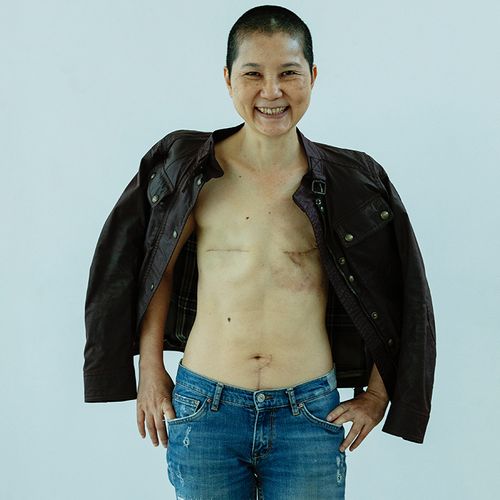If you're a woman and carry a mutation in your BRCA1 or BRCA2 gene, you probably already know that you're more likely to develop breast or ovarian cancer than women who don't carry such a genetic mutation. But what you probably didn't know is that if you have either one of those mutations and your mom or aunt had breast or ovarian cancer, then there's a good chance that you could be diagnosed with cancer nearly eight years earlier than your mom or aunt was, according to a recent study from the University of Texas MD Anderson Cancer Center in Houston. This research adds to the small but growing body of reports about this trend.
Lead study author Banu K. Arun, MD, associate professor of breast medical oncology and clinical cancer prevention and co-director of the Clinical Cancer Genetics program at the university, and her colleagues analyzed 132 women with breast cancer who tested positive for either a BRCA1 or BRCA2 mutation between 2003 and 2009-these women served as the "younger" generation in the study. Of these women with both breast cancer and a BRCA mutation, 106 had aunts or mothers who had had either breast or ovarian cancer, so their aunts and mothers made up the "older" generation in the study. By analyzing the ages of cancer diagnosis among the families in both generations, Dr. Arun and her team found that the median age of the cancer diagnosis was 79 years earlier for women in the younger generation.
Why The Shift?
Several relatively recent trends may have helped lead to earlier BRCA-related cancer diagnoses in younger women, said Dr. Arun, including...
- An increase in BRCA mutation awareness, plus an increase in the availability of genetic tests (both of which may have led to an increase in genetic testing).
- Improvements in imaging techniques (which has likely led to getting more accurate diagnoses).
- More environmental influences, such as taking estrogen replacement hormone therapy or exposure to estrogen-like substances in the environment (which some studies have associated with an increased risk for breast cancer.
Another reason that BRCA-related cancer diagnoses are happening earlier in some women's lives, she said, may have something to do with what epidemiologists call anticipation. It's an unfortunate phenomenon in some inherited diseases in which DNA instability causes an illness to strike at a younger age and/or with increased severity in subsequent generations. (This happens with Huntington's disease, for example.)
In other words, these findings are not necessarily dire. They could mean that women are developing the disease at younger ages or that they're simply discovering it sooner-or both Since all of those reasons listed above probably play a role, said Dr. Arun, the study's findings are likely due to a mixture of factors.
One limitation of the study is that the researchers assumed that the older generation's breast or ovarian cancer was caused by a BRCA1 or BRCA2 mutation-but there was no way to know for sure (because in some cases, the aunts and moms had already passed away and, in other cases, they never took genetic tests). So the younger generation's cancer may have been hereditary or those women may have been the first generation in their families with the mutation.
Know Your Risk
For women who have a BRCA mutation and are therefore at high risk for both breast and ovarian cancer, the question is: How soon and how frequently should you get screened?
- How soon to start. The American Cancer Society (ACS) recommends that high-risk women begin getting screened for both types of cancer at age 30, but they caution that it's a good idea to discuss the best age with your doctor—because if your mom or aunt got either disease at a young age, you may want to start getting screened earlier.
- How often to go. The ACS recommends that high-risk women get yearly breast screenings that should include a magnetic resonance imaging (MRI) scan, a mammogram and a clinical breast exam (where a doctor examines your breasts). A pelvic exam done by your doctor during your annual gynecological exam is usually the best way to get screened for ovarian cancer-your doctor might also want to give you a CA-125 blood test, which checks for the level of a certain protein found on the surface of ovarian cancer cells.
In spite of the questions this study raises, it is clear on one point—those at high risk for breast cancer must be aggressive in their screening and do all that they can to reduce environmental and lifestyle risk factors for the disease.
